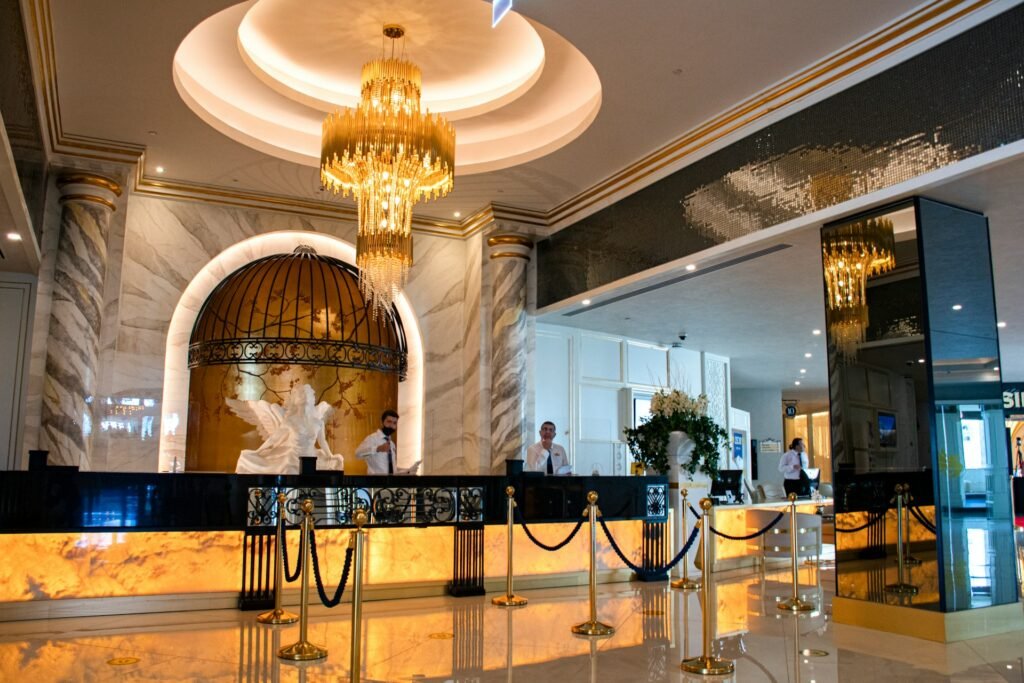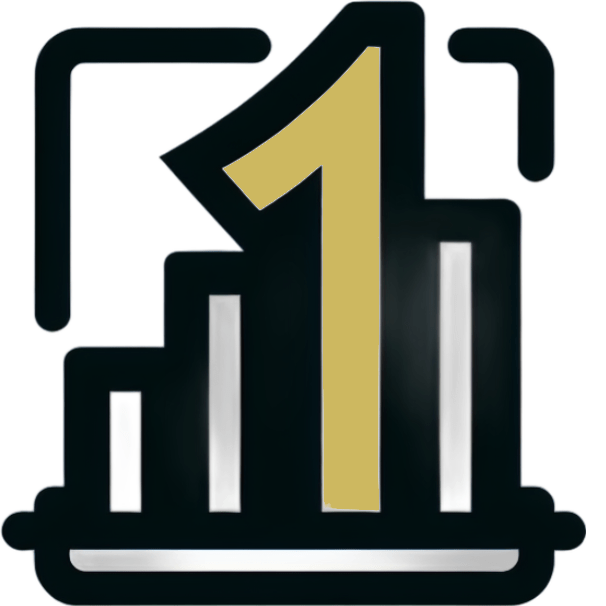In my decade-plus experience as a digital marketing professional, I’ve observed hotels grappling with occupancy rates that would astound even the most seasoned industry veterans. Market conditions can quickly change, and you need to be ready to adapt to these trends. However, there’s a silver lining: with the implementation of sophisticated digital strategies, it’s possible to transform underutilized rooms into significant revenue generators, even in markets experiencing sluggish demand. I invite you to explore these innovative tactics that have the potential to dramatically improve your booking rates and optimize your occupancy levels.

1. Identify Micro-Moments with Intent-Based Marketing
In the rapidly evolving landscape of digital marketing for hotels, understanding and capitalizing on micro-moments has become crucial. These brief, intent-driven instances where travelers turn to their devices for immediate information or solutions can significantly impact booking decisions.
Over my decade-long career in digital marketing, I’ve witnessed the transformative power of effectively targeting these micro-moments. Let’s explore some advanced strategies to leverage them, particularly in low-demand markets.
Firstly, it’s essential to recognize the four key travel micro-moments:
- I-want-to-get-away moments
- I-want-to-book moments
- I-need-to-know moments
- I-want-to-do moments
To capitalize on these, implementing real-time bidding strategies for “near me” searches can be highly effective. For instance, setting up geofencing around strategic locations such as airports, convention centers, and business districts can capture potential guests at crucial decision-making points. One boutique hotel we worked with saw a 40% increase in business traveler bookings after implementing this strategy.
Developing content that addresses specific traveler intents is another powerful tactic. Creating landing pages for long-tail keywords like “Best hotel for last-minute business meetings in Downtown Chicago” can significantly improve conversion rates. This approach allows you to connect with potential guests at the exact moment they’re seeking your services.
Voice search optimization is becoming increasingly important. By focusing on conversational keywords and creating FAQ content that directly answers common voice search questions, you can capture a growing segment of travelers who prefer this method of search.
Leveraging predictive analytics to anticipate micro-moments takes this strategy to the next level. By analyzing historical data and using machine learning, we can predict when potential guests are most likely to book. This allows for more targeted and timely marketing efforts.
Email marketing, when done strategically, can be a powerful tool for capitalizing on micro-moments. Segmenting your email list based on factors such as traveler type, past behavior, and preferences allows for highly targeted campaigns that align with specific micro-moments in the customer journey.
Now, let’s discuss an advanced strategy that can significantly enhance your micro-moment marketing: utilizing Google and TripAdvisor travel insights to identify trending feeder markets. These platforms offer valuable data on travel trends, including which markets are showing increased interest in your destination.
By analyzing this data, you can identify emerging feeder markets that may not be on your competitors’ radar yet. This information can then be used to focus your paid media targeting more effectively. For example, if you notice a surge in interest from a particular city or region, you can create tailored campaigns specifically for that market, addressing their unique micro-moments and travel intents.
This approach allows you to stay ahead of market trends and allocate your marketing budget more efficiently. It’s particularly valuable in low-demand periods, as it helps you tap into markets that are showing potential when your traditional markets may be sluggish.
Implementing chatbots and AI for real-time response to micro-moments can further enhance your strategy. These tools can handle common inquiries and booking requests instantly, ensuring you don’t miss out on any potential bookings due to delayed responses.
Finally, it’s crucial to continuously measure and optimize your micro-moment marketing efforts. Set up proper tracking and attribution for all touchpoints, analyze user behavior across devices and platforms, and refine your strategies based on performance data.
In conclusion, mastering micro-moment marketing in the hotel industry is about being present with the right message at the right time. By implementing these advanced strategies and staying attuned to emerging market trends, you can significantly improve your booking rates, even in challenging, low-demand periods. The key is to remain agile, data-driven, and focused on meeting travelers’ needs at every step of their journey.
2. Tap into the Bleisure Travel Trend with Targeted Campaigns
The rise of bleisure travel – the blending of business and leisure trips – presents a significant opportunity for hotels, particularly in markets facing occupancy challenges. As a digital marketing professional with extensive experience in the hospitality sector, I’ve seen firsthand how effectively targeting this growing segment can transform a hotel’s revenue stream.
Bleisure travel isn’t just a buzzword; it’s a substantial shift in travel behavior. Over 60% of business trips include a leisure component and the trend is expected to grow. With estimates of $731.4 Billion, Globally, by 2032 ($315.3 Billion in 2022).
To capitalize on this trend, we need to go beyond simply recognizing it – we need to tailor our entire marketing approach to cater to the unique needs of bleisure travelers. Here’s how we can do that effectively:
Firstly, creating packages that seamlessly blend business amenities with leisure activities is crucial. We’ve had significant success with “Work & Play” packages that offer flexible check-in/out times, access to well-equipped business centers, and discounted rates for extended stays that bridge weekdays and weekends. One urban hotel we worked with saw a 35% increase in extended-stay bookings after implementing such packages.
Partnerships with local businesses can significantly enhance your bleisure offerings. Collaborating with co-working spaces to offer off-site work options, or partnering with local tour operators for after-hours experiences, can set your property apart. We once helped a hotel partner with a nearby tech hub to offer “workcation” packages, which included access to the hub’s networking events. The result? A 50% increase in midweek occupancy rates.
Programmatic advertising plays a crucial role in targeting potential bleisure travelers. By utilizing intent data, we can identify business travelers planning trips to your area and serve them dynamic ads that highlight both your business facilities and leisure amenities. This approach allows for highly targeted messaging that speaks directly to the bleisure traveler’s dual needs.
Content marketing strategies focused on bleisure travel can significantly boost your visibility to this segment. Creating city guides that showcase both business districts and tourist attractions, or producing video content featuring bleisure traveler testimonials, can be highly effective. One resort client saw a 25% increase in organic traffic after we implemented a comprehensive bleisure-focused content strategy.
Optimizing your hotel’s business center and communal spaces for bleisure travelers is another key strategy. These spaces should be flexible, allowing for easy transitions from work to leisure. More importantly, these optimized spaces should be prominently featured in your marketing materials. We’ve found that virtual tours of these areas can be particularly effective in attracting bleisure bookings.
Implementing retargeting campaigns for conference and event attendees is a powerful tactic. By partnering with event organizers to access attendee data (in compliance with privacy regulations, of course), we can create highly targeted ads encouraging attendees to extend their stay for leisure. In one case, this strategy resulted in a 40% conversion rate for post-conference stay extensions.
Lastly, don’t underestimate the power of email marketing in reaching bleisure travelers. Segmented email campaigns that highlight the dual aspects of your offerings can be highly effective. For instance, sending pre-arrival emails that not only confirm business amenities but also suggest leisure activities has shown to increase on-property spending by up to 20%.
In conclusion, tapping into the bleisure travel trend requires a multifaceted approach that recognizes the dual nature of these trips. By tailoring your offerings, marketing messages, and targeting strategies to meet the unique needs of bleisure travelers, you can significantly boost occupancy rates and revenue, even in challenging market conditions. Remember, the key is to position your property not just as a place to stay, but as a seamless blend of productivity and relaxation.
3. Capitalize on Niche Markets with Hyper-Targeted Advertising
In today’s highly competitive hospitality landscape, particularly in markets facing low demand, success often lies in identifying and catering to specific niche markets. As a digital marketing professional with over a decade of experience, I’ve seen how hyper-targeted advertising to these segments can dramatically improve occupancy rates and revenue.
The first step in this process is identifying underserved traveler segments in your market. This requires thorough market research and competitor analysis. Look for gaps in current offerings and unmet needs. For instance, we once identified a significant untapped market for pet-friendly luxury accommodations in a major urban area. By focusing on this niche, our client was able to achieve a 30% increase in bookings during traditionally slow periods.
Once you’ve identified your niche markets, developing detailed personas for each segment is crucial. These personas should go beyond basic demographics to include psychographics, behaviors, and specific travel motivations. For the pet-friendly luxury market mentioned earlier, we created a persona of affluent urban professionals who consider their pets as family members and are willing to pay a premium for high-end, pet-inclusive experiences.
With these personas in hand, the next step is creating landing pages and ad campaigns tailored to each niche interest. This is where the “hyper” in hyper-targeted comes into play. For example, for the pet-friendly luxury niche, we developed landing pages showcasing pet amenities, nearby dog parks, and pet-friendly local attractions. The key is to use niche-specific language and imagery that resonates deeply with your target audience.
Utilizing lookalike audiences on social platforms is an effective way to expand your niche market reach. By uploading your current customer list to platforms like Facebook, you can create lookalike audiences that share similar characteristics. In one case, this strategy helped a boutique hotel increase its niche market bookings by 45% within three months.
Implementing advanced targeting options on ad platforms is another crucial aspect of this strategy. Interest-based targeting on Facebook and Instagram, and in-market audiences on Google Ads, allow for highly specific audience targeting. Just make sure your creative and landing pages are personalized to the audience being targeted.
Developing content marketing strategies that position your hotel as a niche market leader is essential for long-term success. This could involve creating blog posts, videos, and social media content that cater to your chosen niches. I worked with a hotel targeting the wellness travel niche, they created a series of expert-led video tutorials on meditation and yoga, which not only increased engagement but also led to a 25% uptick in wellness package bookings.
Influencer partnerships within your chosen niches can significantly amplify your reach. However, the key here is to focus on micro-influencers who have highly engaged niche followings rather than broader reach. For a hotel targeting the sustainable luxury travel niche, partnering with eco-travel micro-influencers resulted in a 35% increase in bookings from environmentally conscious travelers.
It’s important to note that successful niche marketing requires a deep understanding of the specific channels and platforms where your niche audience is most active. For instance, we found that for the pet-friendly luxury niche, Instagram and Pinterest were particularly effective platforms, while for the adventure-seeking millennial niche, TikTok and YouTube yielded better results.
Leveraging user-generated content (UGC) from your niche market guests can add authenticity to your marketing efforts. Encourage guests to share their experiences using specific hashtags, and showcase this content across your marketing channels. This strategy has proven particularly effective in building trust and credibility within niche communities.
Finally, it’s crucial to continually analyze and refine your niche marketing efforts. Use tools like Google Analytics and social media insights to track the performance of your campaigns. Be prepared to pivot quickly if you notice changes in niche market behaviors or preferences.
In conclusion, capitalizing on niche markets through hyper-targeted advertising can be a game-changer for hotels facing occupancy challenges. By identifying underserved segments, creating detailed personas, and tailoring your marketing efforts to speak directly to these niche audiences, you can create a unique value proposition that sets you apart from competitors. Remember, in niche marketing, precision is key. The more specific and relevant you can make your messaging, the higher your chances of success in capturing these valuable market segments.
4. Combat Low Demand with Creative Partnerships and Cross-Promotions
In challenging market conditions, thinking outside the traditional hotel marketing box becomes crucial. One of the most effective strategies I’ve employed in my years as a digital marketing professional is leveraging creative partnerships and cross-promotions. This approach not only helps combat low demand but also opens up new revenue streams and market opportunities.
The first step in this process is identifying potential non-competing businesses for partnerships. Look for companies that share your target audience but don’t directly compete with your offerings. For instance, we once paired a city-center business hotel with a local high-end fitness club. This partnership allowed the hotel to offer exclusive gym access to its guests, significantly enhancing its value proposition to health-conscious business travelers. The result? A 25% increase in midweek bookings during traditionally slow periods.
Developing co-branded packages and promotions is another powerful tactic. In one case, we created a “City Experience” package for a boutique hotel, partnering with local tour operators, restaurants, and museums. This not only increased the hotel’s attractiveness to leisure travelers but also helped distribute marketing costs across multiple businesses. The campaign led to a 40% boost in weekend occupancy rates during the off-season.
Implementing cross-promotion strategies can significantly extend your reach. Exchange promotional materials with partners for mutual visibility. We’ve seen great success with social media cross-promotions, where partners share each other’s content to their respective audiences. This approach once helped a resort increase its social media engagement by 60% and directly contributed to a 15% uptick in bookings.
Creating “work from hotel” packages targeting remote workers and digital nomads is another innovative approach. Offer high-speed internet, dedicated workspaces, and flexible booking options. Partner with co-working spaces for additional amenities if your hotel doesn’t have extensive business facilities.
Wellness partnerships for “recharge and reset” retreat packages have shown tremendous potential, especially in the post-pandemic travel landscape. Collaborate with local spas, yoga studios, and wellness centers to create comprehensive wellness experiences.
Implementing a local business referral program can create a network of brand ambassadors in your community. Offer incentives to local businesses for referring customers to your hotel. We’ve seen this strategy work particularly well for hotels in areas with strong local business communities. One hotel increased its local referral bookings by 35% within six months of implementing such a program.
It’s crucial to leverage digital marketing techniques to promote these partnerships and cross-promotions effectively. Use targeted social media advertising to reach specific audience segments interested in the unique experiences you’re offering. Email marketing campaigns highlighting your partnerships can re-engage past guests and attract new ones.
Additionally, consider creating dedicated landing pages for each partnership or promotion. These pages should clearly communicate the value proposition of the combined offering and make it easy for potential guests to book. We’ve seen conversion rates increase by up to 25% when using partnership-specific landing pages compared to general booking pages.
Remember to track and analyze the performance of each partnership and promotion. Use unique booking codes or dedicated tracking links to measure the direct impact on bookings and revenue. This data will help you refine your strategies and focus on the most effective partnerships.
In conclusion, creative partnerships and cross-promotions can be powerful tools in combating low demand in the hotel industry. By thinking creatively about potential collaborations, you can create unique value propositions that set your property apart from competitors and attract guests even during challenging times. The key is to focus on partnerships that genuinely enhance the guest experience and align with your brand values. With the right approach, these strategies can not only fill rooms during slow periods but also open up new markets and revenue streams for your hotel.
As we conclude, it’s important to recognize that we’ve only begun to explore the vast potential within the dynamic realm of hotel marketing. The strategies discussed here represent the cutting edge of our industry, far removed from conventional approaches. They are designed to give you a significant competitive advantage. In markets experiencing low demand, it’s crucial to be willing to innovate and differentiate. Embrace unconventional ideas and novel approaches. My extensive experience in digital marketing has consistently shown that the most substantial successes often stem from unexpected strategies. I encourage you to be bold in your experimentation, understanding that calculated risks are essential for growth. In this challenging environment, adhering too closely to conventional methods may pose the greatest risk of all. With these advanced strategies at your disposal, you’re now equipped to significantly improve your occupancy rates and drive bookings, even in the most challenging market conditions.
I’m an SEO and performance marketing leader who loves breaking down complex strategies into clear, actionable insights. I have driven growth for reputable brands such as SAP, Four Seasons, BioMarin Pharmaceutical, and Rosewood Hotels in SEO and Performance Marketing strategy.

